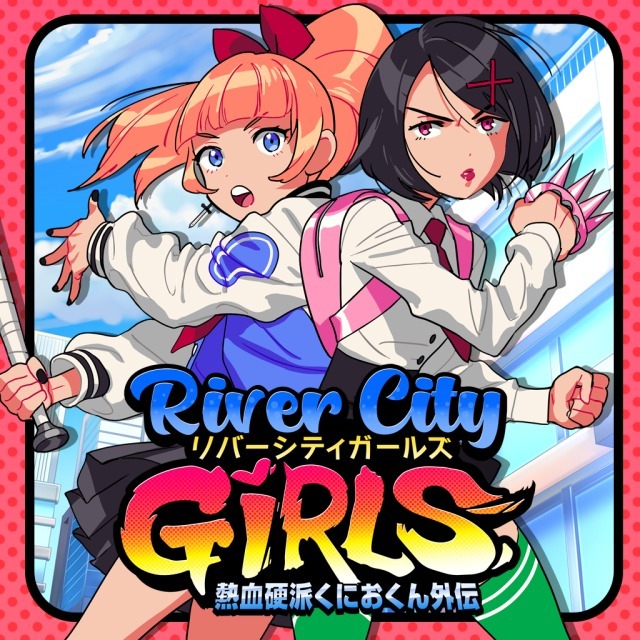
Mercantile-minded folks are out celebrating Black Friday, but here I am celebrating Black Eye Friday instead. That's right, this week we'll be covering a brawler, a genre I don't dip into much (and for good reason, outlined further below): WayForward's River City Girls, published/licensed by Arc System Works. Anime fighter peddlers ASW acquired the Kunio-kun license from Technos Japan (or, well, an intermediary) in 2015, and this game's full of characters from both that franchise and Double Dragon—the two apparently sharing a universe much like Final Fight and Street Fighter. It sees Kunio and his brawling buddy Riki apparently kidnapped at the start of the game, prompting their respective girlfriends Misako and Kyoko to ditch detention and go rescue them.
The most famous non-sports Kunio-kun game, at least overseas, is River City Ransom: hence this game is both named after and structurally based upon that game's blueprint. A before-its-time brawler that implemented an open-world exploration aspect, vendors that sold restorative items and new techniques, and a conducive-to-grinding feature where enemies would regularly hassle you wherever you went but commonly weren't strictly necessary to fight in order to keep moving forward. River City Girls implements all of that as well, dividing its time between fetch missions that will have you scouring its more open-world areas for a series of items or clues, and more dungeon-like self-contained locations that have linear paths to their bosses. Defeating enemies earns you both money and XP: the former can be spent at vendors and the latter contributes to levelling up, which provides incremental bonuses to your stats (max health, fighting power, defense, etc.) and unlocks new moves for purchase. You have two slots for accessories, most of which provide very small buffs of around 1-5%, so your money is often better put towards food items from restaurants and cafes: not only is this the most quick and direct form of healing, but each new food item type also gives you a permanent stat buff. If you get KOed, and you probably will a lot, you'll lose about a quarter of the cash on you; subsequently, it behooves you to go spend your cash after the big payouts received from completing side-quests and defeating bosses (that is, if you can survive long enough to backtrack with what little health you might have remaining).
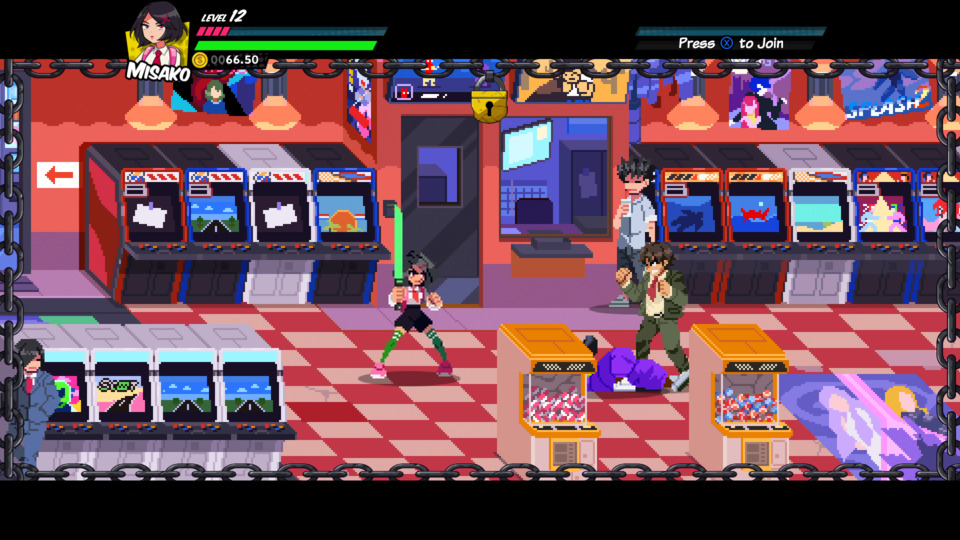
I'll get the positives out of the way. River City Girls has a visual style that honors the cartoonish world of the Kunio-kun franchise but specifically takes after the more realistically-proportioned characters from the game that introduced Misako and Kyoko to the world, at least as playable characters: Shin Nekketsu Kouha Kunio-kun: Kunio-tachi no Banka, which has since been rereleased as River City Girls Zero due to this game (I actually reviewed it semi-recently here). WayForward is never a slouch when it comes to 16-bit graphics and that's as true here as it is in their Shantae franchise or the unexpectedly gorgeous explormer The Mummy Demastered—the many faces of River City from the Akihabara-like neon Uptown to the dingy, dilapidated Downtown to the gentrified Ocean Heights are given a detailed and distinctive rendering and the various enemy combatants, though their types are small in number, are given variations that often do a little more than just change the palettes. The biggest stand-out in the presentation, as is often the case with WayForward, is the soundtrack: largely composed by Megan McDuffee with contributions from Chipzel, Nate Sharp, and Dale North, with McDuffee lending vocals to several tracks as in-universe rock star "Noize", the music builds on that dreamy stylish '80s Streets of Fire vibe established by what might be the game's stylistic predecessor Double Dragon Neon (with the Lee brothers also making cameo appearances as vendors in RCG too, incongruously voiced by the Game Grumps, as well as their one-time nemesis Skullmageddon) and is definitely a fine soundtrack to bust heads to.
WayForward, being the bunch of retro game nerds they are, also ensured a lot of accuracy to extant RCR lore with this game. Hasebe and Mami, the girlfriends of Kunio and Riki in most of the other Kunio-kun games, are reimagined here as teasing mean girl adversaries of Misako and Ryoko, frequently showing up to snipe at the protagonists for their poor fashion taste and general ignorance of modern teen trends while purporting to be the actual girlfriends of the kidnapped duo. Canonically, they're probably correct, but I like that the game plays with the idea that these two have somehow seduced the heroes purely as a means of spiting their hated rivals. Other Kunio-kun villains show up as bosses and vendors, as well as familiar guest characters like Abobo and new characters like the daughter of recurring Yakuza boss Sabu, Sabuko (literally "child of Sabu"). It's a fun way to connect the continuity of the Technos Japan brawler universe and WayForward (along with maybe Digital Eclipse or Tribute Games, the developers behind the recent TMNT: Shredder's Revenge) is one of the few Indie devs I could name that can do it justice.
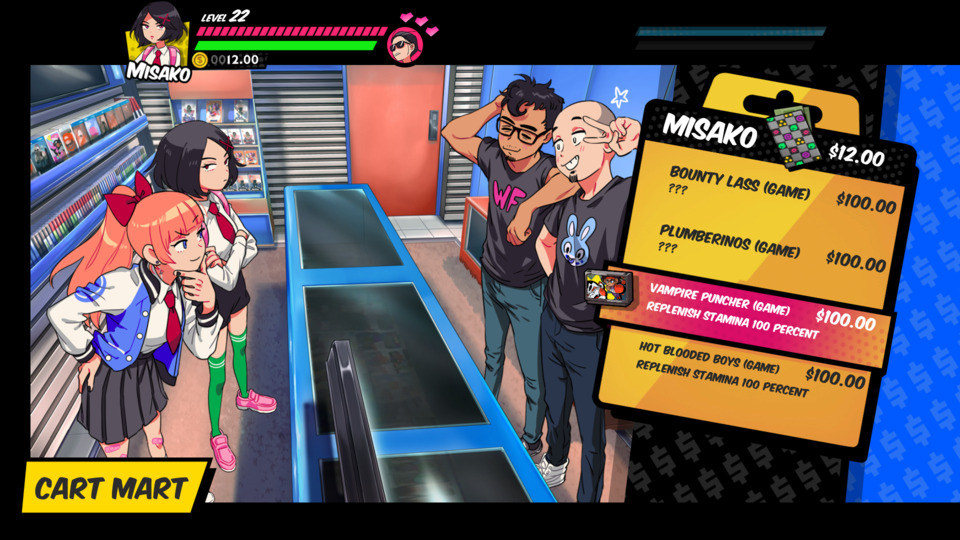
My issues with RCG are mostly tied in to how many throwback (and throw forward, depending on which direction you push) brawlers are very adamantly trying to pretend they came directly out of the arcades in the 1990s, and it occasionally feels like they haven't accounted for several decades of advancements beyond those that would make a significant alteration to the gameplay model like going 3D. Yakuza/Like a Dragon is what I would consider the modern incarnation of River City Ransom as well as the brawler genre as a whole, layered as it is with so much more incidental content and a combat system that makes better use of evasion, parries, counters, and crowd control techniques. Some of that is evident in this game too, but it also feels many of the same problems that plagued those older games from unseen enemy attacks from off-screen to overlapping a sprite so your attacks whiff (but theirs somehow don't) has been lovingly replicated here for little reason other than, I guess, authenticity. The way most enemy animations take priority over yours, or the extremely generous interpretation of where the hitboxes of their attacks start and end, means you'll regularly be taking hits to the face despite best attempts to avoid such a scenario. You're also as beholden to being juggled with air-attacks and losing huge chunks of your health bar as your opponents are, though in the latter case there's few situations where you could attack quickly enough to keep foes airborne unless you have a very coordinated companion to help.
There are also issues endemic to this game specifically too, of course. One such example is the boss difficulty, which hits an enormous unexplained spike right in the middle of the game against a spider-like fashion diva who spends the majority of the fight floating out of reach and shooting Touhou garbage at you for minutes at a time until she finally deigns to let herself become vulnerable. A boss like this wouldn't be such a pain if the opportunities to do damage led to some serious harm: instead, she has twice the endurance of the previous bosses and so it usually takes about three cycles before she moves onto the next stage of the fight. I died several times just from losing the very long battles of attrition each fight turned into; I'm half convinced I missed something major, like some heretofore unknown double-jump technique that would've given me the height I needed. Conversely, the bosses that followed were all one-and-dones, including the last boss (for as cheap as she was). I guess when you think you have a good idea for a boss fight you just roll with it, but not even the secret bosses gave me as much trouble as that floating fashionista (and they had a stun-lock multi-hit attack that chopped my health bar in half).
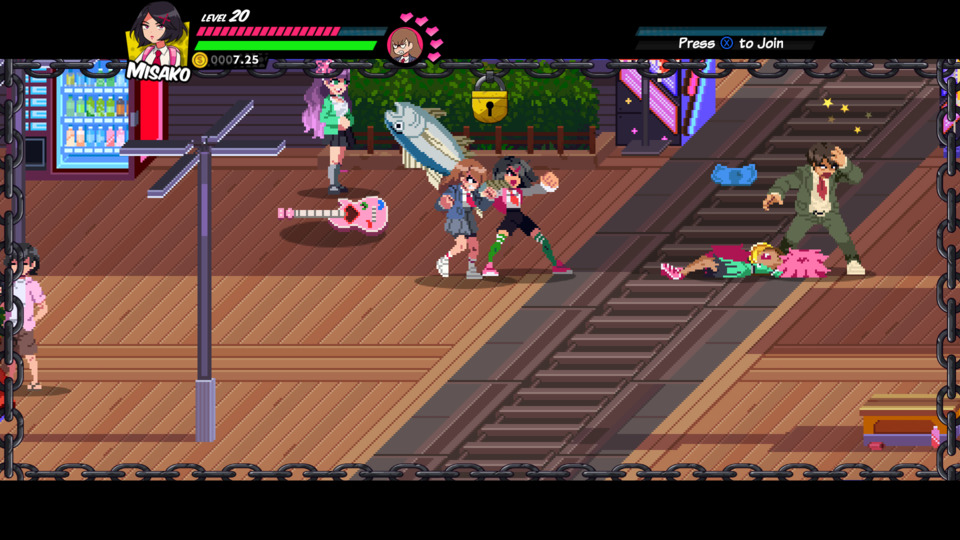
As a result, for as much as I loved inhabiting the world of River City Girls, actually playing the game was often a painful chore and I can only blame it so far for sticking to its guns as a deliberate throwback. It could be that I just don't care for the genre itself, or at least this antiquated version of it, as RCG is considered by most to be one of the better Indie games of its type; however, as a diehard Like a Dragon fan, I have seen and experienced a future model for the brawler genre that has so thoroughly curb-stomped the older street belt-battlers that it's kinda hard to go back. It's true that many genres of the '90s were unfairly cast aside as others rose up to draw attention away, but with brawlers it was entirely a case of beepers dying to cellphones as the latter could do everything the former could and more besides. But hey, maybe that's just my own lack of nostalgia for these things. I certainly played many of them as a kid but didn't really gel with them; not like, say, 16-bit style turn-based RPGs or the four-directional first-person dungeon-crawlers, either of which I'll champion at a moment's notice. Suffice it to say, I probably won't be featuring many more games like this on here unless I see some marked improvement to the hoary archetype they're built upon. The game did let me throw enemies into a pit though, so it's not all bad.
Rating: 3 out of 5.
| < Back to 346: Looking for Aliens | 001-100 | 101-200 | 201-300 | > Forward to 348: Q.U.B.E. 2 |
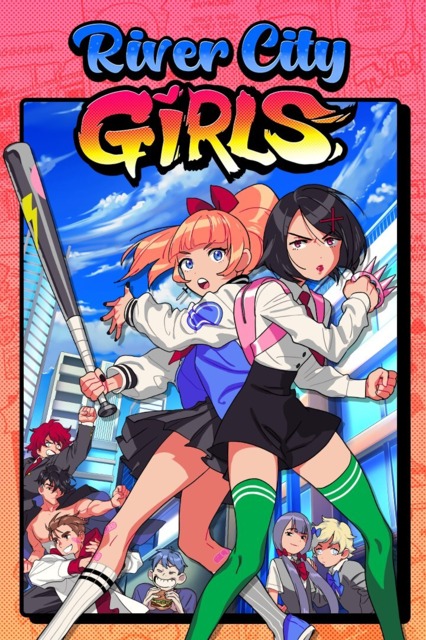
Log in to comment